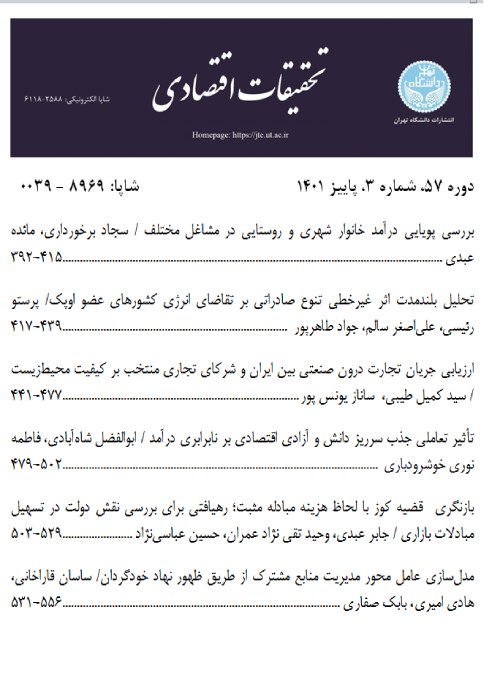Determinants of Inflation in Iran Based on STR Approach
Author(s):
Abstract:
This Paper estimates the determinants of inflation in Iran using a linear and non- linear regression model over the period 1959-2008. In the model specification, the conventional variables (liquidity, production and exchange rate) as well as positive and negative oil revenue shocks, monetary disequilibrium, and demand gap are considered. The results show that nonlinear time series regression model outperforms the linear model in explaining inflation in Iran. The model coefficients are functions of oil price. In the low oil income regime, positive oil shocks decrease the inflation rate while these shocks are not significant in the high oil income regime. Demand gap or excess demand does not have any significant effect on inflation when oil revenues decrease. But in oil boom periods, demand gap affects inflation significantly (probably through government expenditure).
Keywords:
Language:
Persian
Published:
Journal of Economic Research, Volume:47 Issue: 101, 2013
Page:
221
magiran.com/p1103657
دانلود و مطالعه متن این مقاله با یکی از روشهای زیر امکان پذیر است:
اشتراک شخصی
با عضویت و پرداخت آنلاین حق اشتراک یکساله به مبلغ 1,390,000ريال میتوانید 70 عنوان مطلب دانلود کنید!
اشتراک سازمانی
به کتابخانه دانشگاه یا محل کار خود پیشنهاد کنید تا اشتراک سازمانی این پایگاه را برای دسترسی نامحدود همه کاربران به متن مطالب تهیه نمایند!
توجه!
- حق عضویت دریافتی صرف حمایت از نشریات عضو و نگهداری، تکمیل و توسعه مگیران میشود.
- پرداخت حق اشتراک و دانلود مقالات اجازه بازنشر آن در سایر رسانههای چاپی و دیجیتال را به کاربر نمیدهد.
In order to view content subscription is required
Personal subscription
Subscribe magiran.com for 70 € euros via PayPal and download 70 articles during a year.
Organization subscription
Please contact us to subscribe your university or library for unlimited access!


